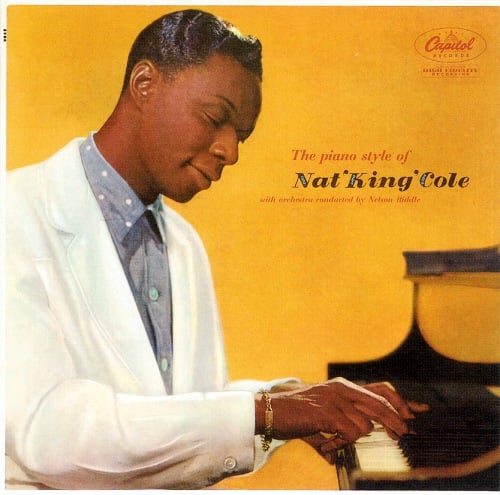Nat King Cole
By:
March 17, 2014

First urbane jazz and blues, then eclectic pop: after a decade-and-a-half a musical star of increasing magnitude, NAT KING COLE (1919–65), faced the year 1956 eager for new challenges. Having previously refused to play segregated venues, Cole agreed to perform two separate shows on April 10 at the Municipal Auditorium in Birmingham, Alabama — one for whites, followed by one for blacks. During the early concert, Cole was finishing his third number, “Little Girl,” when three men from the White Citizen’s Council attacked the singer onstage in an ill-conceived kidnapping attempt. On August 23, at the Cow Palace in Daly City, California, Cole paid tribute to President Eisenhower and performed three songs at the Republican National Convention, including “Little Girl.” In November, The Nat King Cole Show debuted on NBC. An ecumenical mix of black and white, hep and hokey, the musical variety program’s strong ratings would prove unequal to the task of attracting Negro-wary national sponsors. Shot that winter in Los Angeles, China Gate, written and directed by Samuel Fuller, was another career landmark: Cole’s first dramatic acting role, which he accepted for a minimum fee. Set in 1954 during the French-Indochina War, Fuller’s Angie Dickinson-led, anti-imperialist, anti-communist, anti-bigotry combat picture was bursting with differences, Cole’s character “Goldie” — a World War II and Korean War GI turned mercenary — included. As recounted in his autobiography, A Third Face, Fuller hadn’t intended Cole to sing but after hearing him croon the Victor Young/Harold Adamson title tune, he couldn’t resist.
“That Ain’t Right” (1942)
“Little Girl” live 1946
“China Gate” (1957)
***
On his or her birthday, HiLobrow irregularly pays tribute to one of our high-, low-, no-, or hilobrow heroes. Also born this date: Alexander McQueen, Bayard Rustin, J.D. Beresford.
READ MORE about members of the New Gods Generation (1914-23).
